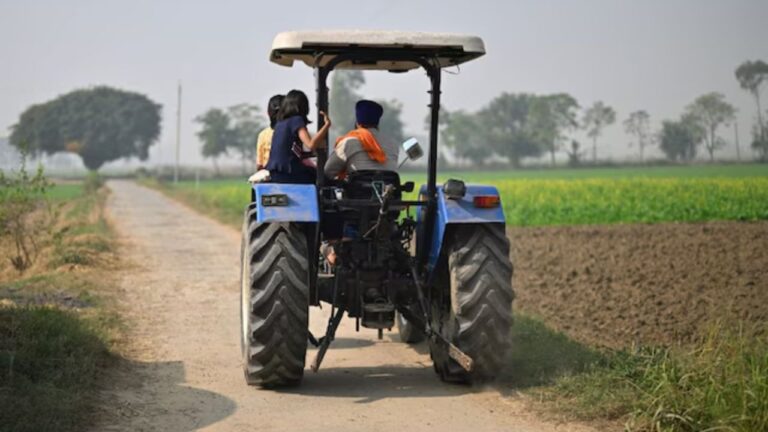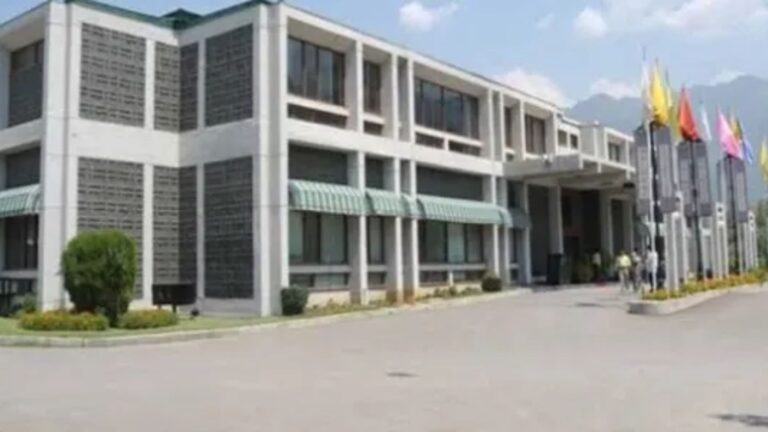
A new study has highlighted the impact of large-scale rice cultivation on climate change in Punjab, a state critical to India’s food security. Conducted by scientists from Punjab Agricultural University (PAU), Ludhiana, the study examines how the expansion of rice farming has influenced key meteorological parameters, including temperature, humidity, monsoon patterns, and evaporation rates.
Published in Theoretical and Applied Climatology on February 5, the study, titled Rice Cultivation: A Contributor to Climate Change in Indian Punjab – A Perspective, was authored by Prabhjyot Kaur, principal scientist at PAU’s Department of Climate Change and Agricultural Meteorology, along with Assistant Professor Harleen Kaur and former research director N. S. Bains. The research highlights the environmental consequences of the dramatic increase in rice acreage since the 1970s.
Impact of Rice Farming on Climate
The study indicates that the shift towards rice farming, which began with the Green Revolution in the late 1960s, has significantly altered Punjab’s climate. The state’s central plains, covering approximately 55% of its area and accounting for 70% of rice cultivation, have experienced notable climatic shifts. Meteorological data from 1970 to 2020 shows a consistent rise in minimum daily temperatures by 0.054°C per year in rice-intensive areas, while non-rice-growing regions saw negligible changes.
According to the study, the period between 1970 and 1995 saw the most significant changes in temperature, humidity, and evaporation rates due to the rapid expansion of rice fields, which now span nearly 3 million hectares. Researchers suggest that this transformation may also have affected monsoon rainfall patterns.
Changes in Monsoon Patterns
The study notes that Punjab’s monsoon season, which traditionally lasted around 77 days, has extended in recent decades. Since 2000, the monsoon duration has increased by an average of 0.8 days per year, reaching 98 days in 2020 and 118 days in 2021. Despite this longer period, total rainfall has declined, with an annual decrease of 6 mm. Between 2000 and 2020, Punjab received below-normal monsoon rainfall in 18 out of 21 years, with deficits exceeding 20% in several instances.
The researchers suggest that the presence of standing water in rice fields disrupts atmospheric processes that typically drive rainfall. The cooling effect from vast waterlogged fields could be interfering with the normal condensation mechanisms, thereby affecting monsoon stability.
Rising Temperatures and Greenhouse Gas Emissions
Another key finding is the increase in nighttime temperatures, which researchers attribute to the expansion of wetland rice farming. This type of agriculture is known to release greenhouse gases like methane (CH4) and nitrous oxide (N2O), intensifying the greenhouse effect. The study notes that Ludhiana, a rice-intensive region, has seen minimum temperatures rise by 3.7°C since the 1970s. In contrast, non-rice-intensive areas like Bathinda and Nawanshahar recorded temperature increases of just 0.6°C and 0.1°C, respectively.
The presence of standing water in rice fields traps heat, raising nighttime temperatures and narrowing the difference between day and night temperatures. Additionally, the study recorded increased humidity levels and a decline in pan evaporation in Ludhiana, leading to a more humid microclimate. A reduction in sunshine hours over the decades was also observed, possibly due to increased cloud cover or altered rainfall patterns.
Groundwater Depletion and Future Challenges
The study also highlights the alarming depletion of groundwater due to excessive rice cultivation. Punjab’s heavy reliance on groundwater irrigation to sustain rice production threatens the long-term viability of agriculture and poses serious ecological risks.
Dr. Prabhjyot Kaur, one of the study’s lead authors, stressed the urgent need for sustainable farming practices. “From rising temperatures and altered monsoon patterns to groundwater depletion, intensive rice farming is reshaping Punjab’s climate and future agricultural prospects. While rice cultivation has been a cornerstone of the state’s economy, its environmental costs cannot be ignored. Punjab must transition to more sustainable farming practices before the damage becomes irreversible,” she stated.
Call for Sustainable Agriculture
The findings underline the need for policy interventions to address the environmental impact of rice farming. Experts advocate for crop diversification, improved water management, and alternative agricultural methods to mitigate climate change effects.
With Punjab playing a crucial role in India’s agricultural economy, balancing food security with environmental sustainability remains a pressing challenge. Policymakers and farmers must work together to adopt climate-resilient farming techniques to safeguard the region’s agricultural future.






